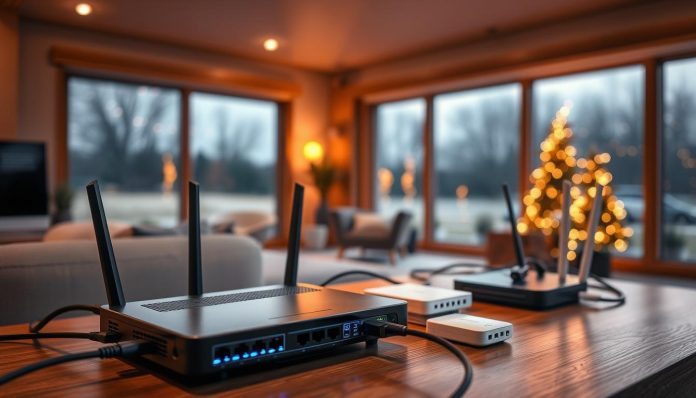Prepare your Wi‑Fi for a busy holiday so family and friends enjoy smooth streaming and video calls when they arrive. The season brings many devices online for gaming, movies, and group chats. A quick check can prevent slowdowns and data issues.
Start by walking your house with a phone to spot dead zones and place the router centrally and high. Test internet speed with Speedtest and compare results with your provider. If your router is over five years old, consider upgrading to Wi‑Fi 6 or a mesh system for better coverage and more simultaneous devices.
Plan a guest access point to separate traffic and set limits. Reboot the router before guests show up, update firmware, and confirm a strong password so personal files stay private. Map high‑demand devices to 2.4 GHz or 5 GHz bands to improve performance and avoid common issues.
Key Takeaways
- Assess coverage and walk the house to find dead zones.
- Test speeds now and compare with your ISP plan.
- Create a guest SSID and set limits for visitors.
- Place the router centrally, update firmware, and reboot.
- Match devices to the best band and consider an upgrade if needed.
Why securing your home Wi‑Fi before holiday guests matters
Guest traffic on a single subnet raises the chance of data leaks and lateral malware movement. Leaving visitors on the main network exposes laptops, NAS drives, and smart hubs to unnecessary risk. Segmenting traffic creates a buffer that keeps household systems safer.
Create a separate guest network with device isolation and bandwidth caps. A dedicated SSID limits what guests can reach and prevents their devices from communicating with your IoT gear. Adding a captive portal gives clear access rules and helps reduce connection issues.
Set bandwidth limits so heavy streaming won’t degrade video calls or gaming on your primary connection. Use your ISP app or router dashboard to monitor who joins and remove unknown devices quickly.
Keeping smart plugs, cameras, and thermostats off the guest SSID reduces attack surface and lowers support needs during gatherings. Planning traffic priorities and simple access policies preserves performance and protects sensitive data when many devices share the internet.
- Isolate visitors: reduce lateral malware risk.
- Protect sensitive data: segment away from your main network.
- Manage performance: limit bandwidth and monitor connections.
Lock down the basics: passwords, encryption, and firmware
Start with credential hygiene and a few quick settings changes that stop common attacks.
Use a long, unique passphrase as your password for Wi‑Fi and never reuse it for admin or other accounts. Create a separate, guest‑friendly -fi password to hand out and keep admin credentials private. Store admin login details in a password manager and disable remote admin unless you truly need it.
Enable WPA3 where available, or at minimum WPA2, and turn off WPS to avoid easy PIN attacks. Next, log into the router admin portal and check for router firmware updates. Installing router firmware updates patches vulnerabilities and often improves firewall rules and threat intelligence.
- Enable device isolation and content filters in settings.
- Hide or uniquely name your main network and keep it distinct from the guest network.
- Audit connected devices and revoke unknown clients; back up current settings before updates.
| Action | Why it matters | Quick step |
|---|---|---|
| Change admin login | Stops default credential attacks | Set new username, store in manager |
| Enable WPA3/WPA2 | Stronger encryption limits eavesdropping | Choose WPA3 in security settings |
| Update router firmware | Patches security flaws and improves stability | Log router, check updates, install |
How to Secure Your Home Network Before Thanksgiving Guests Arrive with a dedicated guest network
Give visitors a dedicated Wi‑Fi lane so streaming and calls won’t compete with your main systems.
Enable the guest network in your router settings and create a clear SSID plus a strong passphrase (name password that guests can read). This lets guests connect without touching your main network or shared devices.
Segment traffic and isolation
Place all guest traffic on a separate subnet and enable device isolation. That prevents guests from seeing printers, NAS, or other devices on your main network.
Controls, filters, and monitoring
Set bandwidth limits so one device cannot hog the internet. Turn on content filters and consider a captive portal to show terms or a login code.
Use your router or ISP app to watch who joins and remove unknown clients quickly. If your router lacks guest features, add a second router or an access point and configure an isolated network guest.
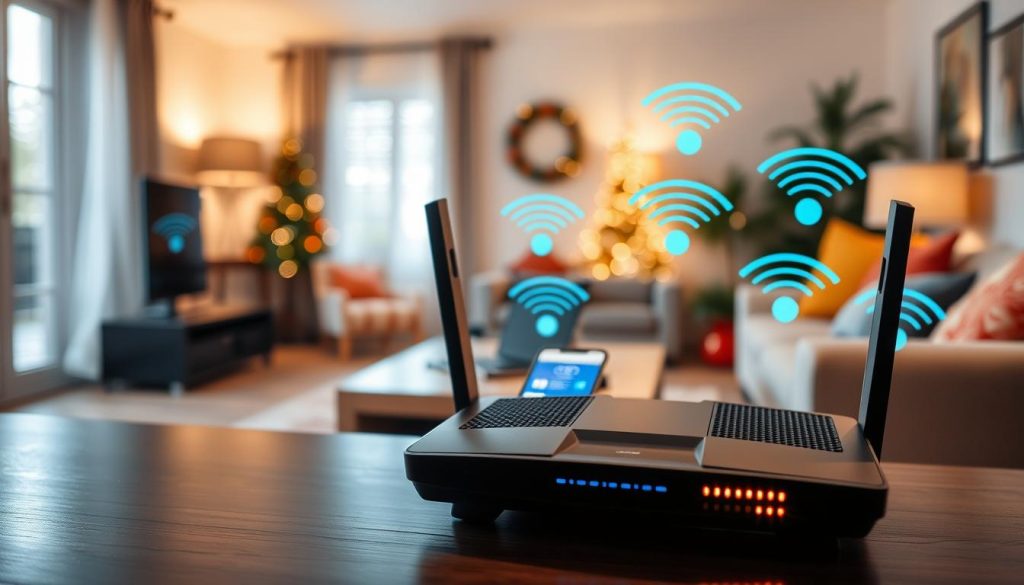
- Set guest network with a unique SSID and passphrase.
- Keep main network separate from guest devices.
- Enable device isolation and bandwidth caps.
| Step | Why it matters | Quick action |
|---|---|---|
| Enable Guest SSID | Keeps visitors from accessing private devices | Turn on Guest Network, set SSID and password |
| Segment subnet | Stops lateral access across networks | Assign guest VLAN or use separate AP/router |
| Apply limits & filters | Preserves bandwidth and blocks risky sites | Set caps, enable content filters, optional portal |
Optimize performance for holiday traffic without exposing your data
Make simple placement and band decisions that keep streaming and conferencing fast during gatherings. Position the router centrally and high, away from thick walls and metal. This improves reach across your home and cuts interference.
Use the 5ghz band for streaming devices and video calls, and leave 2.4 GHz for basics like smart plugs and simple browsing. Dual‑ or tri‑band gear helps split loads so many devices can stay responsive.
Prioritize important traffic
Enable QoS on the router to give conferencing and streaming higher bandwidth priority. Scan for less congested Wi‑Fi channels and switch to a cleaner channel with a scanner app.
Tame congestion and cover dead zones
Schedule a weekly reboot during the holiday period to clear memory leaks and keep the connection snappy. Add an extender or mesh nodes where signal drops persist. Pre‑download movies and updates before guests arrive so peak internet bandwidth stays free for live activities.
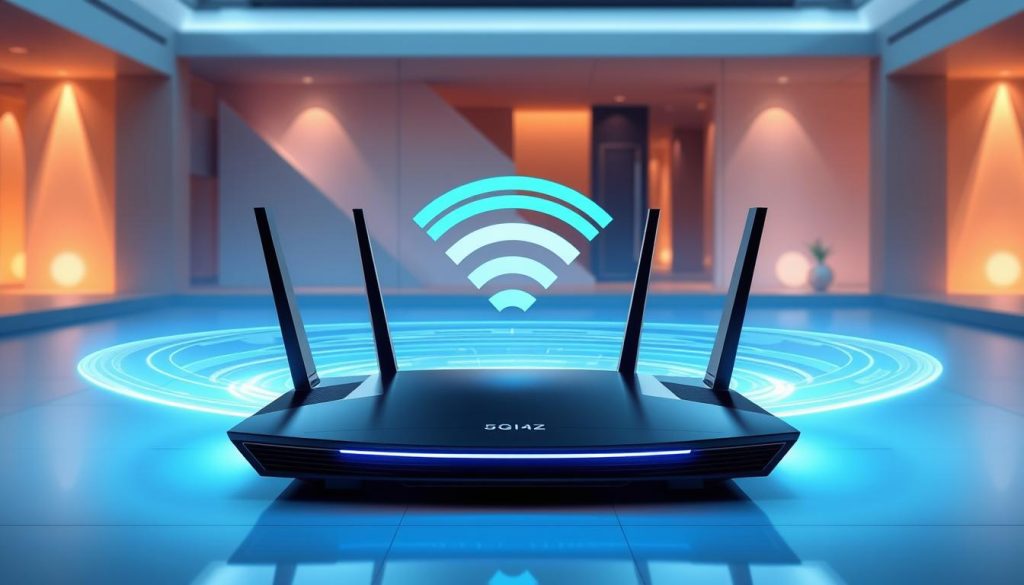
| Action | Benefit | Quick step |
|---|---|---|
| Central router placement | Better coverage, fewer dead zones | Move router up and out in open space |
| Use 5GHz for heavy tasks | Improved streaming and call performance | Assign streaming devices to 5GHz SSID |
| Enable QoS & band steering | Keeps priorities smooth during spikes | Turn on QoS, enable band steering/load balancing |
Quick fixes when guests report slow speeds, buffering, or drops
Slow video or repeated disconnects usually point to a few common causes you can fix fast. Start with simple checks and work outward from the router.
Eliminate weak spots by moving the router a few feet for better line‑of‑sight. If a room still struggles, add an extender or place a mesh node nearby for stronger coverage.
Use wired Ethernet for high‑priority gear like smart TVs and game consoles to remove them from the wireless load. This often restores performance immediately.
Reduce device overload and confirm correct SSID
Limit the number of devices connected during peak use. Pause low‑priority gadgets and background updates so streaming or calls get bandwidth.
Make sure guests connect to your guest network rather than the main network. That protects privacy and keeps your primary systems fast.
- Plug TVs, consoles, and workstations into Ethernet for stable performance.
- Eliminate dead zones quickly with a well‑placed extender or an extra mesh node.
- Confirm guests connect to the guest SSID, not your main network.
- Move the router or devices slightly to improve signal in problem rooms.
- Toggle QoS to prioritize the buffering app and deprioritize background tasks.
- Switch nearby clients to 5 GHz for streaming, keep 2.4 GHz for distant rooms.
- Reboot the router when drops persist and check for firmware updates.
- Scan and change crowded channels to avoid neighbor interference.
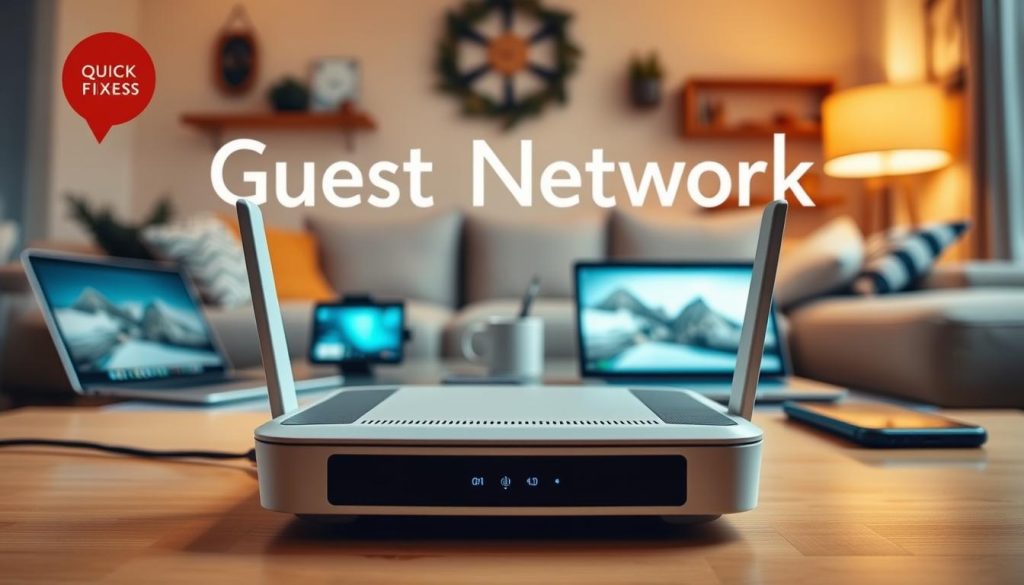
| Action | When to use | Expected result |
|---|---|---|
| Ethernet for priority devices | Streaming, gaming, video calls | Stable, low‑latency connection |
| Extender or mesh node | Persistent dead zones | Improved coverage in problem rooms |
| QoS and channel change | Ongoing congestion or buffering | Better priority for live apps and less interference |
Consider upgrading your Wi‑Fi gear before the big day
Older hardware often creates bottlenecks; investing in a current router or mesh kit pays off when many devices connect at once. New platforms boost capacity and deliver faster speeds for streaming and video calls.
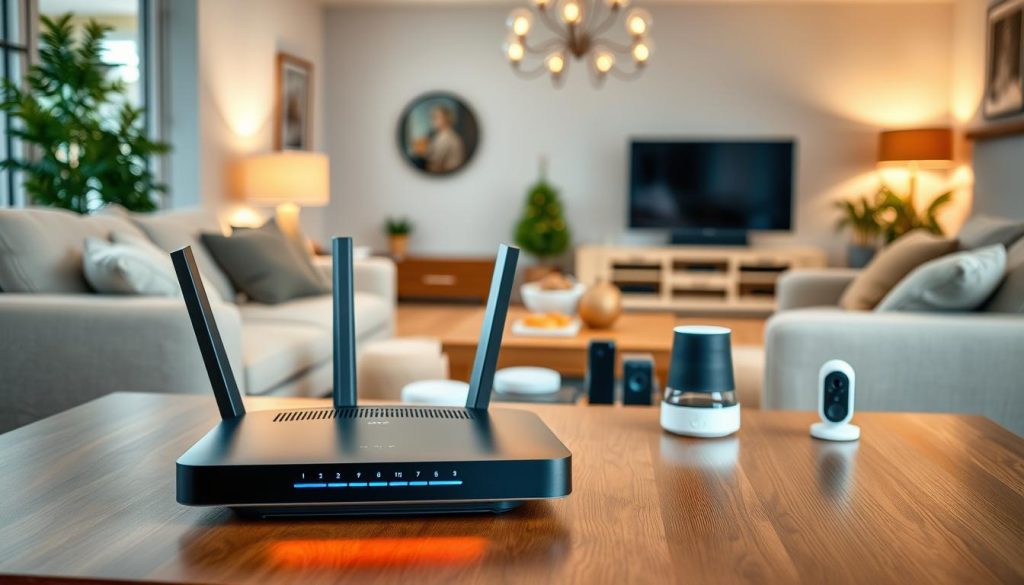
When to upgrade: older routers vs. Wi‑Fi 6/6E/7 for more devices and faster speeds
If your router is over five years old, it may not support Wi‑Fi 6/6E/7. Those standards handle more devices and offer cleaner spectrum like 6 GHz for faster speeds.
Look for WPA3, robust QoS, and multi‑gig WAN/LAN ports. Confirm your internet service provider can deliver the plan speed. Test the internet service after switching gear and keep the old router as a fallback.
Mesh systems versus extenders for multi‑floor or large homes
Mesh uses multiple access points for even coverage across stairs and long runs. Extenders are cheaper but often create separate SSIDs and weak handoffs. Weigh cost, control, and roaming needs when choosing an option.
| Solution | Best use | Key benefit |
|---|---|---|
| Single router (modern) | Small apartments | High throughput, compact |
| Mesh system | Multi‑floor or large home | Seamless roaming, even coverage |
| Extender | Spot fixes | Low cost, simple |
- Consider upgrading if your router lags under many devices.
- Check with your internet service provider about plan limits.
- Plan node placement and test a few days before guests arrive.
Conclusion
Complete the checklist by launching a guest SSID, adding device isolation, and posting easy join instructions.
Set guest access with a clear name and a printed QR or card that shows the -fi password. Keep the main network separate so trusted devices stay private and traffic is limited.
Log router, apply router firmware updates, and schedule a quick reboot before holiday guests arrive. Verify devices connected and remove anything unfamiliar to keep the connection clean.
Steer streaming devices to the 5ghz band and enable bandwidth limits or QoS so priority activities stay smooth. If speed tests lag, contact your internet service provider about faster service or hardware upgrades.
Final tip: share joining steps with family, keep simple troubleshooting tips handy, and review access after the gathering so data stays protected and performance remains fast.
